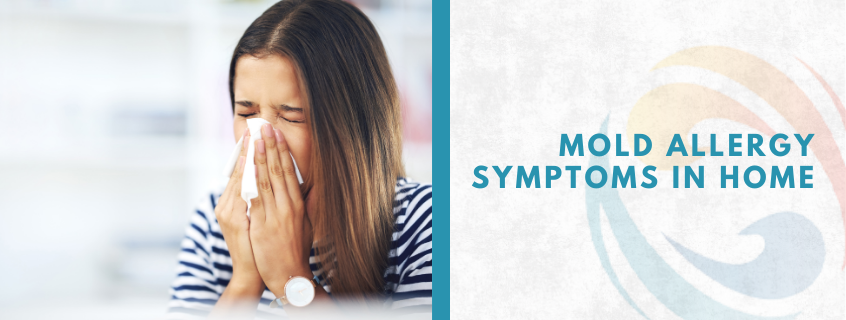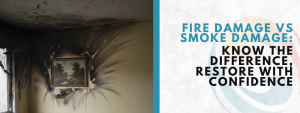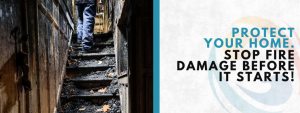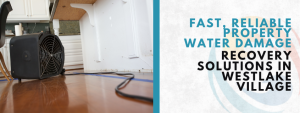
Have you ever walked into a room and suddenly felt like you couldn’t stop sneezing? Or maybe your eyes get itchy, and your nose gets stuffy for no clear reason. You might think it’s just dust or your seasonal allergies acting up. But what if the problem is hidden in your walls?
Let’s talk about mold—specifically the mold allergy symptoms in home that may be affecting you and your loved ones. Mold doesn’t just smell bad or make your walls look ugly. It can cause illness, especially in individuals with allergies or weakened immune systems. And the worst part? It often grows quietly, out of sight, behind walls, under floors, or in ceilings.
Many homeowners don’t even know mold is lurking in their home until someone starts getting sick. That’s why understanding the mold allergy symptoms in home is so important. In this guide, we’ll explain how to recognize these symptoms, where mold hides, and what you can do about it.
Let’s dive into how your home could be silently affecting your health, starting with the symptoms that might be right under your nose.
Common Mold Allergy Symptoms You Should Never Ignore
Mold is sneaky. It can grow inside walls, behind wallpaper, or near leaking pipes. While some mold is visible, most of it hides in dark, damp places. But even when you can’t see it, your body might be reacting.
Here are some of the most common signs you may have mold allergy symptoms in home:
- Constant sneezing, especially indoors
- A runny or stuffy nose that never goes away
- Red, itchy, or watery eyes
- Coughing that doesn’t stop
- A scratchy throat, even when you’re not sick
- Skin rashes or itchy skin
- Feeling tired or having trouble focusing
In children, it can look even more serious:
- Frequent ear infections
- Worsening asthma or breathing problems
- Trouble sleeping or concentrating in school
These mold allergy symptoms in home often feel like a cold or seasonal allergy, but they don’t go away even when the weather changes. If your symptoms improve when you leave the house and get worse when you come back, mold might be the reason.
Where Mold Likes to Hide in Your Home
One of the trickiest things about mold is how well it hides. You won’t always find it sitting in plain sight. Instead, it loves moisture and dark spots, which makes your walls a perfect hiding place.
Here are the top places mold likes to grow indoors:
1. Behind Walls
Mold loves drywall. If there’s a water leak or condensation inside your wall, mold can grow and spread without anyone knowing. That’s why many people suffer mold allergy symptoms in homes without realizing the mold is right behind them—literally.
2. Under Carpets
Wet carpets from spills, leaks, or even steam cleaning can cause mold. If your carpet feels damp or smells musty, that’s a red flag.
3. In Basements
Basements often have poor ventilation and more humidity. That makes them one of mold’s favorite places to live.
4. Around Windows
Leaky windows or condensation buildup? That can lead to mold growth in the window frame or the wall next to it.
5. Under Sinks and Behind Appliances
Kitchens and bathrooms are water-heavy areas. Leaky pipes under the sink or dripping water behind the washing machine or refrigerator create the perfect mold-growing zone.
When you understand where mold hides, you can start connecting the dots between strange smells, damp spots, and those lingering mold allergy symptoms in home that won’t go away.
What Causes Mold to Grow in Your Walls?
Mold needs just three things to grow: moisture, warmth, and a food source. Your walls—especially drywall—give it exactly what it wants.
Here’s what helps mold grow:
- Water Leaks: Even a tiny drip from a roof, window, or pipe can feed mold behind the wall.
- Humidity: Homes in rainy areas or without good ventilation build up indoor humidity, which mold loves.
- Flooding: Past water damage, especially if not cleaned up properly, leads to mold spores settling inside your home.
- Condensation: This happens when warm air hits cold walls or windows. It leaves behind water, which molds thrive on.
Once mold finds a home, it starts growing fast. In just 24 to 48 hours, mold spores can start spreading throughout your house.
So if you’re dealing with repeated sneezing, itchy eyes, or strange rashes and can’t find the cause, consider whether your walls are hiding a mold colony—and triggering mold allergy symptoms in your home.
Different Types of Mold That Can Trigger Allergies
Not all mold is the same. Some types grow faster, while others are more toxic. The most common types found in homes that trigger allergic reactions include:
Several common types of mold pose varying levels of allergy risk. Cladosporium, typically found on fabrics, carpets, and wood surfaces, presents a moderate allergy risk. Penicillium, which grows on wallpaper, mattresses, and insulation, carries a high allergy risk. Similarly, Aspergillus, often present in air ducts and HVAC systems, also poses a high risk. Alternaria, frequently located in damp environments like showers and sinks, is associated with a very high allergy risk. The most concerning is Stachybotrys, commonly known as black mold, which usually forms behind walls after water damage and has an extremely high allergy risk.
These molds release spores into the air. When you breathe them in, your body reacts—especially if you’re allergic or sensitive.
People with asthma or weak immune systems face an even higher risk. That’s why identifying and removing these mold types is crucial when dealing with mold allergy symptoms in home.
What Does Mold Smell Like? Trust Your Nose
If you think your walls might have mold, follow your nose. Mold often has a strong, musty odor. People describe it as:
- Damp or earthy, like wet leaves
- Stale or sour
- Similar to old books or a wet basement
The smell might be stronger in certain rooms, especially bathrooms, basements, or areas near water damage. If the odor hits you the moment you walk through the door, don’t ignore it. It might be a sign your home is triggering your mold allergy symptoms in home without you realizing it.
How to Test for Mold in Your Home
If you’re experiencing strange allergy symptoms and suspect mold, it’s time to take action. You don’t need fancy lab equipment to get started.
Look for These Signs
- Stains or discoloration on walls or ceilings
- Peeling or bubbling paint
- A musty smell
- Moisture or water spots
Simple DIY Mold Test Kits
These are sold at most hardware stores. You place a sample plate in a room, then seal it for a few days to see if mold grows. While not as accurate as professional testing, it gives you a starting point.
Call in the Pros
If symptoms continue and you suspect hidden mold, it’s best to get a professional inspection. Experts can test air samples, moisture levels, and even look inside your walls without damaging them.
Professional testing is especially recommended after flooding or water damage. This is where services like this water damage restoration team become important. They know where to look and how to clean mold the right way.
Can Mold Make You Sick?
The short answer: Yes. Mold exposure can seriously affect your health, especially when trapped indoors.
Who’s at Risk
- Children and babies
- Elderly adults
- People with asthma or other breathing problems
- People with weakened immune systems
- Allergy sufferers
Short-Term Health Effects
- Coughing and sneezing
- Sinus headaches
- Eye irritation
- Skin rashes
Long-Term Health Risks
- Asthma attacks or worsening symptoms
- Chronic sinus infections
- Lung infections
- Memory issues or mood swings (in rare cases with toxic mold)
So if you or your family members show signs of mold allergy symptoms in your home, it’s not just a small issue. It’s a warning that your environment may be making you sick, and fast action is needed.
How to Get Rid of Mold Safely
Cleaning surface mold is one thing, but mold inside your walls? That’s a job for the pros. DIY fixes may remove what you see, but they often leave the real problem behind the wall.
Step-by-Step Mold Removal
- Find the Source: Leaky pipes, roof damage, or poor ventilation? Fix it first.
- Contain the Area: Professionals use plastic sheeting and air scrubbers to stop mold from spreading.
- Remove Contaminated Materials: This can include drywall, insulation, carpets, and wood panels.
- Dry the Area: Industrial fans and dehumidifiers ensure moisture is gone.
- Disinfect and Seal: Anti-microbial sprays and protective coatings help prevent future mold.
Professionals also use tools to detect moisture levels and ensure the mold won’t come back. So if you’re living in an area prone to water damage like coastal homes, it’s wise to connect with experts in Water Damage Restoration Pacific Palisades who specialize in this type of cleanup.
How to Prevent Mold from Coming Back
Getting rid of mold is only half the battle. If you want to stop mold allergy symptoms in home for good, you need a prevention plan.
Here’s how to keep mold out for good:
- Use a Dehumidifier: Keep humidity below 50%, especially in basements and bathrooms.
- Ventilate: Use fans in kitchens and bathrooms, and open windows when you can.
- Fix Leaks Right Away: Even a small drip can lead to big mold problems.
- Dry Wet Areas Fast: After spills, clean up within 24 hours.
- Inspect Regularly: Check under sinks, around windows, and in the attic or basement.
Even wall panels and wallpaper should be checked from time to time, especially if you live in humid climates. Mold hides behind beautiful interiors, too!
Final Thoughts: Your Health Starts at Home
If you’ve made it this far, you already know how dangerous mold can be. It’s not just a cosmetic issue—it’s a health risk hiding behind your walls, floors, or even under your paint.
So, what’s the next step?
- Pay attention to your body. Your sneezes, coughs, and rashes might be trying to tell you something.
- Investigate your home. That musty smell or peeling paint might not be as harmless as it seems.
- If you suspect water damage, act quickly. The longer you wait, the more time mold has to grow and spread.
When in doubt, consult experts in professional water damage restoration to inspect and restore your home. A clean home means clean air—and better health for everyone.
Take charge of your environment. Don’t let mold make you sick. The solution could be just behind your wall.
Frequently Asked Questions: Mold Allergy Symptoms in Home
How do I know if mold in my home is causing my allergies?
If you notice sneezing, itchy eyes, or congestion that worsens at home and improves when you’re away, mold could be the cause. A musty smell or water damage in walls is often a key warning sign.
Where should I check first if I think mold is hiding in my house?
Start by inspecting behind sinks, in basements, under carpets, and near windows. Mold often hides where moisture builds up and ventilation is poor.
Can I clean mold myself or should I call a professional?
Small surface mold can sometimes be cleaned safely, but hidden or large areas should always be handled by professionals. Improper cleanup can spread mold and make the problem worse.
What health problems can mold in walls cause over time?
Prolonged mold exposure can lead to chronic coughing, skin irritation, and worsening asthma. Children, seniors, and those with weak immune systems are especially vulnerable.
How can we stop mold from coming back after removal?
Fix leaks, use dehumidifiers, and improve airflow in moist areas like bathrooms or basements. Keeping humidity levels below 50% indoors is key to mold prevention.





